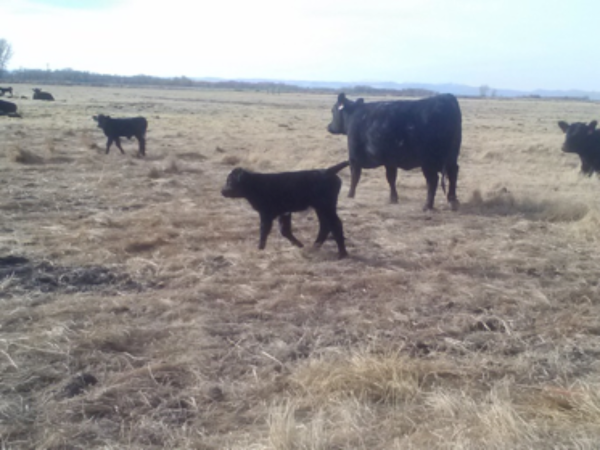Eye on Extension: Prevention is worth a pound of cure

VALLEY — Prevention is worth a pound of cure. That old adage is true in agriculture in general and livestock production for sure. Having a healthy animal herd begins even before birth. However, additional steps can be taken at birth to give the new babies a head start. With calving season in full swing and lambing started as well, now is a time for livestock producers to be thinking of ways to help reduce health problems in their new babies.
It costs much more to treat a disease than it does to prevent it. That is why we have vaccinations for humans and animals. We vaccinate our kids and pets. We also need to vaccinate our livelihood. In the wild, newborn losses are too high to be sustainable or profitable for livestock producers.
By thinking, keeping abreast of new developments and continuing to learn from other knowledgeable people on keeping animals healthy, livestock producers help insure a healthy hers. There is a lot of information being developed about managing newborn problems, but all the problems haven’t been resolved. Many problems can be avoided or managed to minimize losses.
Often a producer knows that mineral supplements are needed in their area. If not, they can ask their neighbors. If not sure, then a blood sample can be taken to test for selenium, zinc or serum copper. Appropriate micronutrient levels will help prevent or reduce the severity of diarrhea outbreaks.
When in the middle of a disease problem, a good investigation can help determine exactly what factors account for the problem. The whole story may not come out, but enough will be determined to help lead to resolving a problem.
There are three factors that can go a long way to keeping a calf healthy.
1. The amount of immunity the newborn receives from its mother. Most of this immunity comes from the colostrum the newborn receives soon after birth.
2. The kind and amount of infectious disease agents in the calf’s environment. Knowing what disease agents are in the area will allow a producer to begin providing the correct defense. Vaccinations are a preventative assistant.
3. Stress. Stress in an animal can reduce their immune response to a pathogen. It can also encourage the establishment of disease already infecting the newborn.
The calf, lamb or kid can receive immunity that will reduce the effect of infectious disease from their dam with their first milk. The first milk or colostrum has antibodies that will help destroy viruses and bacteria. The sooner the new babies receive the colostrum, the better it works. It needs to be received by the young in the first 12-14 hours after birth. Milk replacers and regular milk don’t have the disease fighting antibodies of colostrum.
Vaccinations are another way newborns can be protected. Some of these vaccinations start with their dam before they are born. These vaccinations can enhance the colostrum’s effectiveness. The vaccinations before or at birth can target the most common disease problems and provide protection. It is very important that the directions are followed when giving vaccinations. This can improve the chances of the vaccination being effective.
Talk to a veterinarian about what vaccinations should be given before or at birth. They will also help develop a herd health vaccination program. They may know of vaccinations that can help that are most effective in your area.
Stress creates conditions that appear to make an individual more susceptible to disease than usual. Extremely cold, wet weather, mud, wind chill, and lack of food or water are factors commonly thought of to cause stress. For newborns lack of an adequate energy supply (milk) and cold, damp, muddy, windy weather are common sources of stress. Energy is the primary nutrient needed to help offset stress. Milk is the only source of energy for newborns. To offset the effects of cold related stress, in the cow, more energy goes to provide her heat than goes to create heat for the newborn.
Feed supplements can be provided when additional energy is needed — grains such as corn, wheat, barley or triticale.
Energy conservation is possible through the use of windbreaks. Windbreaks can be built or part of the natural environment. Trees, brush or other natural changes in the pasture can be a great help. Sanitation in the shelters is important. Frequently change bedding to reduce stress and disease organisms.
Preventing stress, providing a chance for colostrum in a timely manner and knowing what diseases are in the area, will allow for better health care for newborn young, and, a better chance of their being healthy from the time they are born.
For more information, you can call the Colorado State University Extension, San Luis Valley Area Office at 719-852-7381.
Extension programs are available to all without discrimination, Colorado State University Extension, U.S. Department of Agriculture and Colorado counties cooperating.
Caption: Preventing stress, providing a chance for colostrum in a timely manner and knowing what diseases are in the area, will allow for better health care for newborn young, and, a better chance of their being healthy from the time they are born./Photo courtesy of CSU Extension, San Luis Valley Area Office



